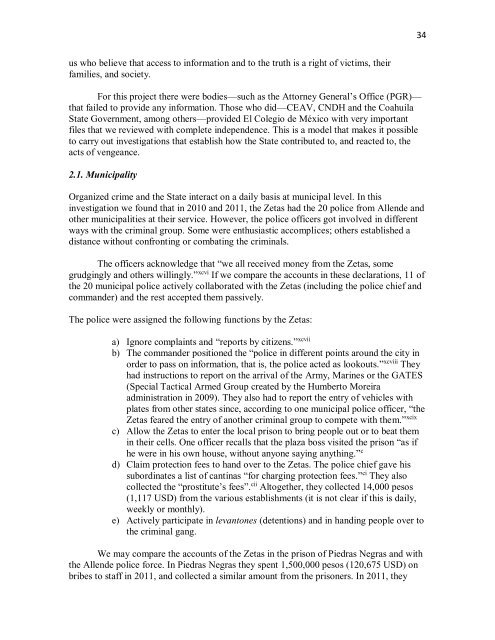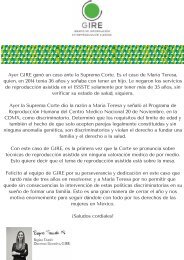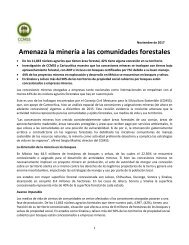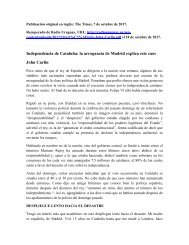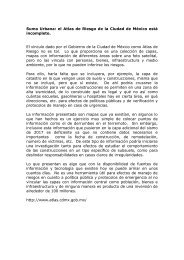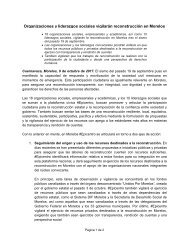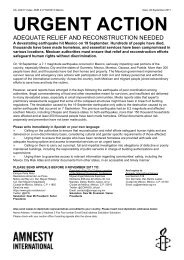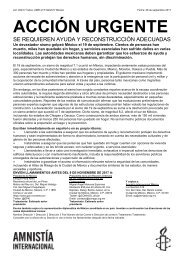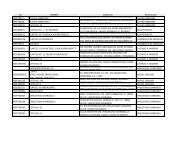Create successful ePaper yourself
Turn your PDF publications into a flip-book with our unique Google optimized e-Paper software.
34<br />
us who believe that access to information and to the truth is a right of victims, their<br />
families, and society.<br />
For this project there were bodies—such as the Attorney General’s Office (PGR)—<br />
that failed to provide any information. Those who did—CEAV, CNDH and the Coahuila<br />
State Government, among others—provided El Colegio de México with very important<br />
files that we reviewed with complete independence. This is a model that makes it possible<br />
to carry out investigations that establish how the State contributed to, and reacted to, the<br />
acts of vengeance.<br />
2.1. Municipality<br />
Organized crime and the State interact on a daily basis at municipal level. In this<br />
investigation we found that in 2010 and 2011, the Zetas had the 20 police from Allende and<br />
other municipalities at their service. However, the police officers got involved in different<br />
ways with the criminal group. Some were enthusiastic accomplices; others established a<br />
distance without confronting or combating the criminals.<br />
The officers acknowledge that “we all received money from the Zetas, some<br />
grudgingly and others willingly.” xcvi If we compare the accounts in these declarations, 11 of<br />
the 20 municipal police actively collaborated with the Zetas (including the police chief and<br />
commander) and the rest accepted them passively.<br />
The police were assigned the following functions by the Zetas:<br />
a) Ignore complaints and “reports by citizens.” xcvii<br />
b) The commander positioned the “police in different points around the city in<br />
order to pass on information, that is, the police acted as lookouts.” xcviii They<br />
had instructions to report on the arrival of the Army, Marines or the GATES<br />
(Special Tactical Armed Group created by the Humberto Moreira<br />
administration in 2009). They also had to report the entry of vehicles with<br />
plates from other states since, according to one municipal police officer, “the<br />
Zetas feared the entry of another criminal group to compete with them.” xcix<br />
c) Allow the Zetas to enter the local prison to bring people out or to beat them<br />
in their cells. One officer recalls that the plaza boss visited the prison “as if<br />
he were in his own house, without anyone saying anything.” c<br />
d) Claim protection fees to hand over to the Zetas. The police chief gave his<br />
subordinates a list of cantinas “for charging protection fees.” ci They also<br />
collected the “prostitute’s fees”. cii Altogether, they collected 14,000 pesos<br />
(1,117 USD) from the various establishments (it is not clear if this is daily,<br />
weekly or monthly).<br />
e) Actively participate in levantones (detentions) and in handing people over to<br />
the criminal gang.<br />
We may compare the accounts of the Zetas in the prison of Piedras Negras and with<br />
the Allende police force. In Piedras Negras they spent 1,500,000 pesos (120,675 USD) on<br />
bribes to staff in 2011, and collected a similar amount from the prisoners. In 2011, they


